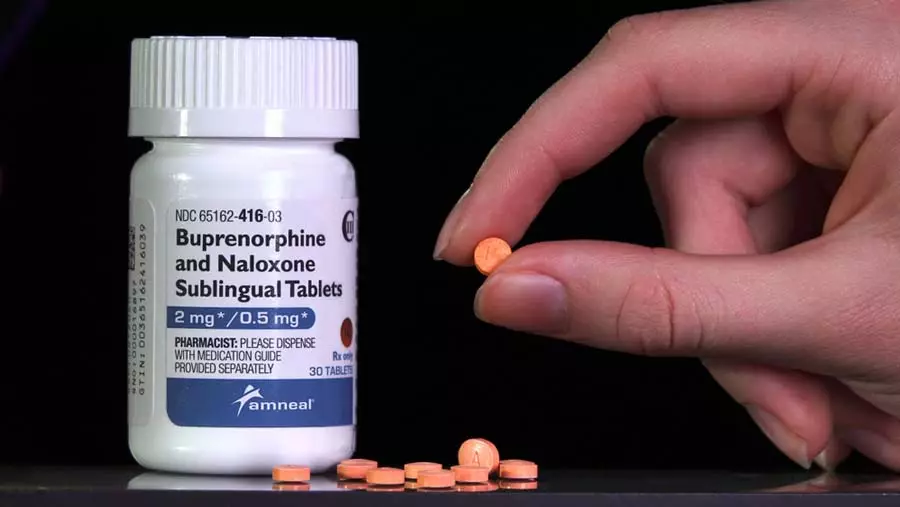How Long Does Fentanyl Withdrawal Last?

Overcoming Fentanyl Withdrawal Symptoms
Fentanyl is an opioid medication that is manufactured specifically to manage acute pain. Pain relief after surgery and continuous treatment for cancer are two examples. This drug is available with a variety of brand names, including Actiq, Sublimaze, Lazanda, and Abstral, which doctors can prescribe.
It’s very powerful, and while it has some similarities to morphine, it is significantly more potent (around 50 to 100 times). It also causes severe fentanyl withdrawal symptoms.
Due to its potency and the fact that it is often added to other drugs without the user’s knowledge, the National Institute on Drug Abuse has labeled fentanyl use as an epidemic. It’s highly addictive, and up to 10% of patients who transition from morphine to fentanyl reportedly go through withdrawal. We’ll go into more detail about the signs and timelines of fentanyl withdrawal and how a good detox program can assist someone suffering from opioid withdrawal can achieve success. But how long does fentanyl withdrawal last?
If you or someone you love is suffering from fentanyl withdrawal symptoms, you might want to read this until the end. Resurgence Texas can help with solutions to avoid this painful situation an help you or your loved one to find lasting recovery!
Addiction Treatment that
Just Works
Individualized treatment programs delivered in a comfortable, relaxed setting promote healing in your recovery journey.
How Long Does Fentanyl Or Other Opioid Withdrawal Last?
Twenty-four to seventy-two hours after the last dose, medical professionals can detect fentanyl in the urine. Hair tests may detect remnants of the medication up to three months after the last dose, while blood testing can detect use within the first 48 hours. The duration of the fentanyl withdrawal timeline is comparable to that of withdrawal from other opioids; however, it can be affected by a number of different circumstances.
It takes as little as two to four hours after the last use for some people to start experiencing opioid withdrawal symptoms. Fentanyl patches (which are administered slowly) might cause withdrawal symptoms anywhere from 24 hours to 36 hours after the last dose. The initial few days of fentanyl withdrawal are often the most difficult for users because of the drug’s short half-life.
With proper medical care and counseling, the symptoms typically subside in the weeks that follow. Some people, however, may continue to experience lesser withdrawal symptoms for up to a month.
The Timeline: Fentanyl Withdrawal Symptoms After Opioid Use Disorder

Post-acute withdrawal syndrome (PAWS) describes this process, which is universal across all forms of opioid detox. While a month of treatment for fentanyl addiction might help alleviate physical symptoms, mental health issues often persist even after severe withdrawal symptoms have subsided. In order to cope with anxiety, cravings, and depression episodes, it is essential to find expert support.
Pros in the field can also instruct clients in effective coping strategies for avoiding the relapse-inducing situations and stimuli that initially led them to stop fentanyl addiction in the first place.
Recognizing the Most Typical Symptoms of Fentanyl Withdrawal and Opioid Use Disorder
Just like with other opioids, the degree of fentanyl’s effects varies greatly amongst users depending on factors such as health and dosage. Both the body and the mind can feel the consequences of withdrawing and fentanyl detox. Potential fentanyl detox symptoms include:
- Anxiety
- Nausea
- Issues falling asleep
- Vomiting
- Fever
- Severe sweating
- Runny nose
- Shivering
- Intense muscle and joint pain
- Increased pupil size
- Dizziness or vertigo
- Intense fatigue
- Rapid breathing
- Stomach cramps
In addition, each stage of fentanyl withdrawal is accompanied by its own unique set of symptoms. Early fentanyl detox, the peak withdrawal period, and late-stage fentanyl detox are the three primary phases of withdrawal.
Addiction Treatment that
Just Works
Individualized treatment programs delivered in a comfortable, relaxed setting promote healing in your recovery journey.
Breaking Down the Stages of the Fentanyl Withdrawal Process
Early Fentanyl Detox Signs (2 to 4 Hours After Last Dose)
Mild physical discomforts, like persistent yawning, pains, and chills, are the early indications of fentanyl withdrawal. Anxiety, restlessness, and an overwhelming desire to use fentanyl are all possible psychological reactions to physical withdrawal.
Highest Level of Symptoms (24 to 36 Hours After Last Dose)
There may be a delay of up to a week between the last dose and the onset of the lowest level of symptoms. Some people experience a worsening of their first withdrawal symptoms as a symptom. Additionally, people may exhibit symptoms such as fever and vomiting, both of which warrant medical treatment.
Continual Withdrawal Symptoms from Fentanyl or Post-Acute Symptoms

After medical detox, these symptoms may develop and occasionally return. Therefore, seeking ongoing withdrawal management is crucial for avoiding recurrence. Those who have recently quit using fentanyl may also have to deal with disturbing thoughts and intense cravings. Some potential long-term symptoms are:
- Negative mood
- Unable to feel pleasure
- Pink cloud syndrome
- Mood instabilities
- Verbal and physical aggression toward others and oneself
- Sensitivity to pain is elevated.
- Issues falling asleep
Fentanyl withdrawal symptoms are not typically life-threatening. Dehydration from diarrhea or vomiting must be avoided at all costs – fluid intake and output must be regularly monitored. Rapid fluid loss, if unchecked, can result in dangerously high salt levels, which can induce heart failure.
IV treatments and other medical care may be necessary to replace the lost metabolites in such clients. Medically supervised treatment centers facilitate the prevention of fluid loss at Resurgence. Texas.
Getting Off Fentanyl Through Medical Detox
When medical detox is combined with withdrawal management, the unpleasant symptoms of fentanyl withdrawal can be mitigated significantly. First, in the line of therapy, medical detox provides a number of advantages, such as:
- The relief from suffering caused by withdrawal.
- Making it possible for doctors to detect additional problems or causes of illness
- Long-term treatment strategies for opioid addiction
- Eliminating or minimizing the potential for relapse
- Detoxifying the body from opioids
Those on the path to sobriety can enter a residential, in-patient, or outpatient rehab program. The degree of withdrawal symptoms and the person’s present living situation may influence the optimal setting. A medical detox process can reverse the harmful effects of fentanyl that may have lingered in the body.
What Medications Are Used for Fentanyl Addiction Treatment?

Those who want to gradually wean off fentanyl as opposed to a rapid detox may express interest in using products like Buprenorphine or Naltrexone. Experts in healthcare would then gradually lessen the dosage of these replacement medications to help patients overcome their addictions.
The length of time it takes to wean off fentanyl depends on a variety of factors, including the individual’s overall health, the presence of any co-occurring disorders, and the intensity of their addiction.
Trained professionals will consult with each client to determine their unique needs and develop a personalized weaning plan. Medical professionals can prescribe a wide range of drugs to alleviate fentanyl withdrawal symptoms. Some examples of these are antidepressants and muscle relaxers. The Food and Drug Administration has approved three medications for use in opioid withdrawal treatment.
These drugs are lofexidine, methadone, and buprenorphine. However, as stated above, any other items are prescribed off-label.
Abuse of Fentanyl and Its Treatment
At the beginning of fentanyl withdrawal management, medical detox is most helpful. However, successful long-term results require that persons in recovery receive comprehensive care. At Resurgence Texas, we give all of our clients a number of options for the treatment portion of recovery:
- Outpatient treatment with follow-ups
- Residential inpatient care that provides medical supervision and treatment around the clock
- Partial hospitalization
- Intensive Outpatient Program or IOP
Post-Fentanyl Withdrawal Treatment: Some Things to Think About

Choosing outpatient treatment can provide convenience not available at a residential facility. However, there are a few things to think about while choosing outpatient treatment, despite the fact that it allows clients to heal without interrupting their daily lives. The severity of withdrawal symptoms in the early stages should not be underestimated. Some symptoms are tolerable, but others, including vomiting and diarrhea, need medical attention and monitoring.
Consider the following before making a decision:
- Can I make the trip to and from the treatment center without too much difficulty?
- Do I have the network and resources to resist relapse if I’m tempted during the healing process?
- Are there items in the house that might trigger my relapse?
- When I think about my sobriety, am I strong enough to deal with the rush of emotions?
Most people experiencing fentanyl withdrawal will benefit from medically assisted detox in addition to psychosocial counseling. Inpatient and partial hospitalization programs offer medical supervision and treatment choices for long-term aftercare that are essential for overcoming withdrawal symptoms.
Relapse can be prevented, for instance, by alleviating the mental and emotional strain of withdrawal through the use of cognitive behavioral therapy. Some people are more comfortable with outpatient care, but having experts on hand can dramatically boost success rates. During the healing process, communication with loved ones might be helpful. Many people in recovery find that talking to their loved ones about their struggles is a tremendous source of strength that helps them to continue.
Beat Fentanyl Withdrawal and Build Your Support System Now!
Putting together the right support system is key to overcoming fentanyl withdrawal and addiction. Let us help you craft a personalized care plan and strategy for exiting treatment – with an expert team by your side, your odds of success increase exponentially.
For more information regarding our program, contact a member of our Admissions team today. All calls to Resurgence Texas are completely confidential, so please reach out now!
Addiction Treatment that
Just Works
Individualized treatment programs delivered in a comfortable, relaxed setting promote healing in your recovery journey.
